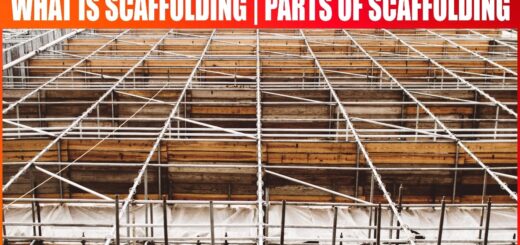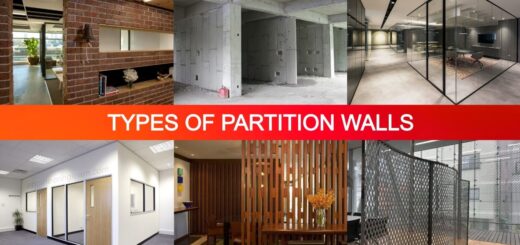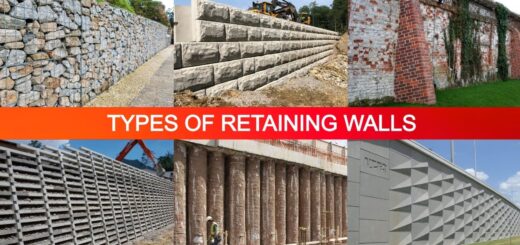What is Tuckpointing? Process, Purpose, Materials, Needs & Benefits [Repointing vs Tuckpointing]
![What is Tuckpointing? Process, Purpose, Materials, Needs & Benefits [Repointing vs Tuckpointing]](https://engineeringlearn.com/wp-content/uploads/2023/04/Tuckpointing-1024x539.jpg)
Introduction
What is Tuckpointing? Process, Purpose, Materials, Needs & Benefits [Repointing vs Tuckpointing]: – Tuckpointing is one of the most well-known masonry repairs performed on brick surfaces, and you might be contemplating whether it’s the right solution for you, as well. Whether your building is a residential home or a business office, Tuckpointing can reestablish the structure of your building’s brick and keep it standing strong into the indefinite future all while working on its aesthetic appeal. It matches the current appearance, giving a superior completion to the interiors and the exteriors. Tuck pointing likewise assists with expanding the life of the structure.
What is Tuckpointing?
Albeit many tasks around the house should be possibly done on your own, some are best passed on to experts, including any work for brick foundations or walls. Like bricks, the mortar keeping them intact can likewise break down after some time, making maintenance vital. That is when tuckpointing comes in to make all the difference. Tuckpointing is the most widely recognized approach to fixing mortar joints between bricks or stones with a tight edge of lime putty or fine lime mortar to restore its appearance and trustworthiness.
To start the process, a mason will utilize a router to eliminate the damaged mortar. Utilizing new mortar to match the current brickwork, the mason cuts thin strips down the middle of the joints to form grooves. At long last, the mason will fill in the grooves with mortar that matches the original shade of the brickwork.
This process seals out dampness from invading the mortar, forestalling further deterioration of the mortar joints while giving the outside of the building a facelift. This process in like manner impersonates rubbed brick work by making a differentiating thin line in the center of the mortar joints, making a deception that the mortar joints look totally straight.
What is the Purpose of Tuckpointing?
Tuck pointing is a mortar joint fix process in masonry construction. It is considered a normal way to deal to taking out the deteriorated or weakened mortar joints from the stonework and slicing or cutting them to a uniform profundity and filling them with another mortar blend. Tuckpointing isn’t just performed on old joints, yet additionally for improper joints of new walls.
When is Tuckpointing Needed?
Below are some points which suggest why Tuckpointing is needed:-
- There are a few indications of deteriorating mortar that are not difficult to spot. Weakened mortar prompts moisture getting into the brick or stone masonry, and the masonry will chip or pop off as a result.
- By rubbing a key across it, you can test your mortar. In the event that a powdered material is scratched up, now is the ideal time to fix your masonry.
- At the point when masonry is as yet taking care of its job of keeping moisture out, hauling a key across it won’t create any scratching.
- Assuming you are uncertain, The professionals will be glad to assist you with assessing the state of your chimney.
- In situations where the adjoining blocks are showing indications of cracking or disintegrating, it implies a segment of the foundation or wall needs quick consideration.
- These are not common indications of typical wear and tear and could be a sign the foundation is compromised or shifting. In such cases, you should hire a specialist to assess your brickwork prior to carrying out any projects.
- Assuming that you live in a humid climate that sees more precipitation, you could have to finish Tuckpointing all the more frequently. Then again, in the event that you live in a dry, parched environment, the mortar in your brick building probably won’t require tuckpointing services as frequently.
- On the off chance that you don’t do tuckpointing, water will start to enter the wall between the bricks. Water infiltration will accelerate the decay of the mortar.
What are the Benefits of Tuckpointing?
There are distinct benefits to tuck-pointing your chimney when the mortar is weakened, including the following:
- Tuckpointing stops the process of corrosion.
- At the point when mortar deteriorates, dampness can get into the chimney and prompt the stone or brick masonry to fall to pieces. Tuckpointing broadens the existence of the chimney by providing a fundamentally waterproof mortar joint.
- Tuckpointing reestablishes your chimney’s structural ability. In the event that weakened mortar joints are not fixed, a total chimney revamp will ultimately be required.
- It sets aside your cash to fix your chimney rather than rebuilding.
- Tuckpointing goes about as a defense against dampness. Other than damaging the chimney itself, unseen damages are brought about by dampness in the chimney, for example, mildew, mold, wood decay, and more.
What is the Preparation Process for Tuckpointing?
Tuckpointing is typically performed by experienced masons and workers. Prior to leading the process, the current issue of the masonry is surveyed. This assists with deciding if the joints require reparation or replacement of mortar in failed joints. The state of mortar joints, the age of the building, and the kind of mortar mix decide regardless of whether the total structure requires cleaning. For utilizing to clean and cutting the mortar joints for tuckpointing are some tools such as a power drill, chisel or masonry cutting and more.
A) Mortar Mix for Tuckpointing
- Eliminate the old mortar utilizing appropriate tools. Typically a saw and a grinder are utilized for this purpose. Continuously check whether there is a requirement for power tools.
- Assuming mechanical tools are utilized, ensure not to damage the masonry units. For old masonry construction work, weighty vibration from these machines is undesirable.
- Play out the joint expulsion process by wearing appropriate personal defensive equipment.
- Begin eliminating the old mortar to a full profundity of 3/8 inches to 1/2 inches. Proceed with this till a firm mortar blend is obtained.
- Never eliminate the mortar from the joint past the depth of 1/3 inch.
- After eliminating the mortar, clean the joint by brushing and washing with water or blowing air. This eliminates residue, trash, and fine particles.
- Select the mortar mix for the joints. Outrageous shrinkage can be decreased by utilizing pre-hydrated mortar.
- The color or shade of the new mortar can be matched with the current mortar by adding added substances.
- Blend all the ingredients of the mortar completely. Add water and blend until the mortar shapes a thick blend to form a ball. Anyway, the mortar should not flow.
- Allow the blend to set and hydrate for two hours. The workability can be expanded by adding the required measure of water.
B) Applying Mortar for Tuckpointing
- First need to dampen the tuckpointing joints before applying mortar to joints. This assists with having a proper bond with the existing surface.
- Many tools and products are accessible for simple placement of mortar into the joints.
- The tip of the trowel is utilized so that you can place the mortar paste into the joint. Fill the joints with mortar and scrape up the abundance.
- At the point when the mortar begins to solidify, strike the joints utilizing a joint strike tool. Carry out the technique starting from vertical joints and afterward horizontal joints.
- Place the mortar in 1/4-inch layers (most extreme) to lessen the number of voids and air pockets.
What are the Materials and Tools used in Tuckpointing?
A) Materials: –
- Type N ready-mix mortar for pointing
- Plastic sheeting
B) Tools: –
- Mortar removal blade (4-1/2-inch) for angle grinders
- Angle grinder, 4-1/2-inch
- Toothed masonry hand chisel
- Wheeled raking tool
- Hammer
- Pointing trowel, 3/8-inch
- Mortar gun with flat and angled nozzles
- Shop vacuum
- Soft brush
- 5-gallon bucket
- Breathing, eye, and hearing protection
What do you Gain by Tuckpointing?
Below are some points which suggest what are the positives of Tuck-pointing:-
1. Property Value
The re-sale value of homes endures when they genuinely need repairs. A well-kept chimney reassures the buyers that they will have no surprises around the chimney if they purchase your home. Assuming that you keep the masonry looking great with the rooftop and the remainder of the home, you can expand the value you can get at the sale.
2. Leak Prevention
A more prompt benefit comes from the protection of leaks by dispensing cracks and holes in the mortar that permit water penetration. When a leak starts, a heavy storm can unleash devastation on your roof and walls around the chimney.
Leaks can likewise sneak into your chimney stack without detection, rusting out the damper and empowering the growth of mold.
3. Curb Appeal
A solid, neat chimney adds to the visual magnificence of your home’s exterior, as does the rooftop, obviously.
4. Prevention of the Total Rebuild
At last, left to decay without repair, the smokestack may ultimately need to be totally re-assembled. The time, cost, and exertion required which involve the expense of regular preventive measures.
Despite the way that tuckpointing might seem to be an obscure thought in defending the value and function of your home, in regards to your brick chimney, it can save you broad repair bills and support its market appeal.
Repointing vs Tuckpointing
- Tuckpointing and Re-pointing are practically similar processes. They accomplish the very same thing eliminating old, worn, or damaged block mortar preceding replacing it with new mortar.
- This is an essential maintenance task that will save the structural integrity of your home or building’s brickwork.
- Brickrepointing and tuckpointing are two maintenance procedures that can achieve this goal. Their approach is the main distinction between the two.
- The most well-known approach to disposing of old mortar is known as Re-pointing, Additionally setting up the area in between the bricks for new material, and placing in the new mortar that changes the brick’s distribution of the home’s weight.
- Without appropriate re-pointing, bricks will bear an uneven load, and your home could start to hang or bulge.
- Tuckpointing likewise eliminates old mortar and installs new mortar, yet with one significant distinction a tuckpointing job adds an alternate color mortar that creates an alluring feature over the newly installed material.
- Albeit the mortar’s color makes little difference in its functionality, it creates crisp, sharp lines that enhance your building’ exterior allure. This attractive visual is highly sought after, but since it requires more materials, it comes at a more noteworthy cost.
Conclusion
Many kinds of masonry repairs should be possible with only a tad of information and skilled hands, Tuckpointing is a better choice left to the specialists. Since these repairs influence the actual structural integrity of your structure, the inability to appropriately install the mortar can prompt long-term issues and even security hazards for residents or guests. What you can do all alone is assess your brickwork on a customary timetable to ensure timely maintenance. With regards to the actual installation and repairs, you need to trust the experts all things considered.
While you can unquestionably attempt to do this all alone, the whole process requires extreme degrees of accuracy to create level mortar joints that look satisfying to the eye. In situations when entire bricks should be replaced, particularly on the off chance that they are load-bearing bricks along your foundation or outside wall, you ought to hire an expert to ensure the structural integrity of your house is maintained.
Content Source: – waterproofcaulking, chimneyspecialistsinc
Image Source: –













